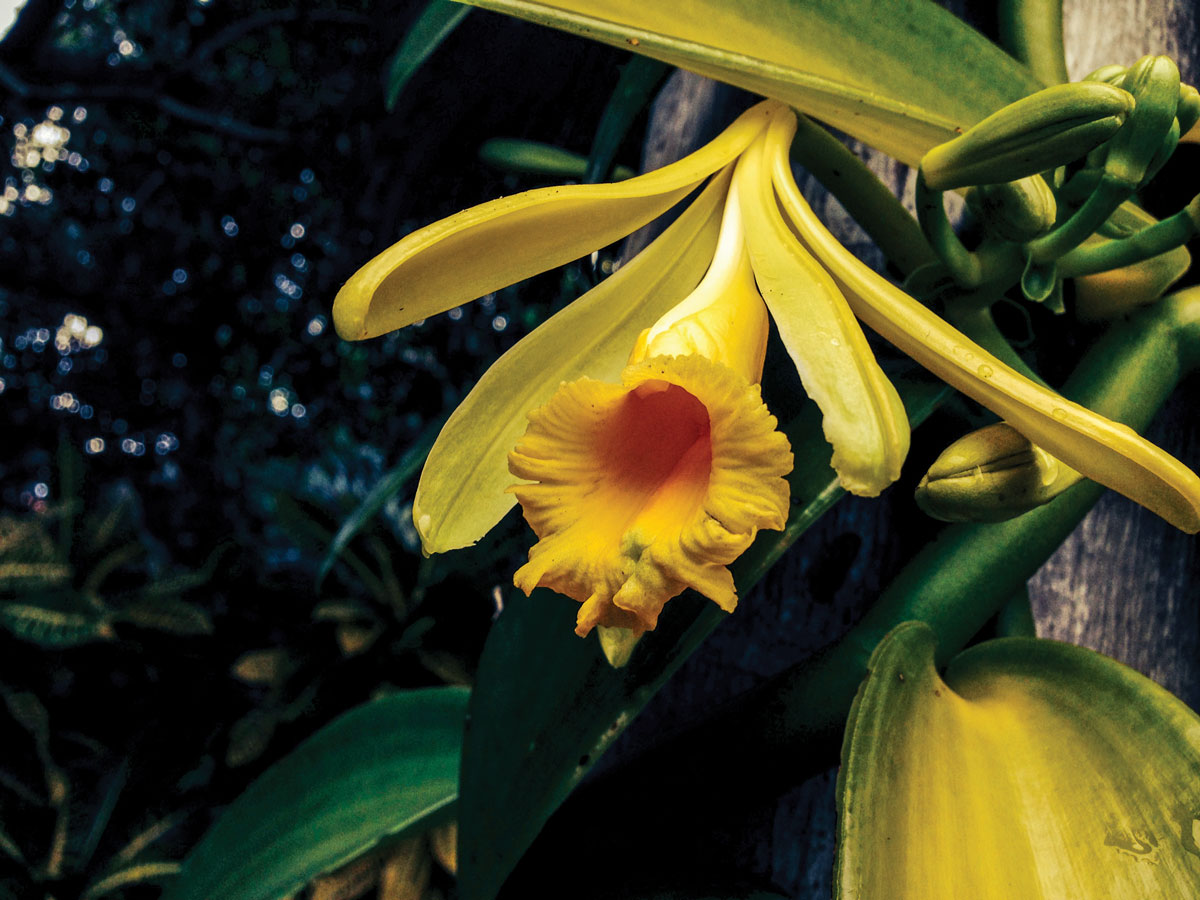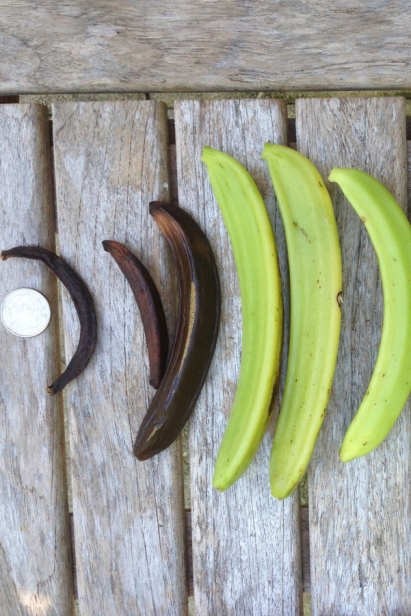Homegrown Vanilla
No baker would be caught without vanilla in their pantry. Vanilla extract flavors cookies and cakes. Beans are slit and added to custards and heavy cream to infuse them with intoxicating flavor. Used beans are buried in jars of sugar.
The world’s most popular flavor, vanilla is essential to home bakers and commercial producers alike, adding fragrant richness to baked goods, ice creams and desserts, and enhancing flavors like chocolate and coffee. It’s even used in perfume.
Native to Mexico, Vanilla planifolia is a vining orchid that thrives in tropical climates, like Madagascar, mainland Africa, Indonesia, Papua New Guinea – and Florida. The second-most valuable flavoring after saffron, pure vanilla has skyrocketed in price in recent years, ranging from $4+ per ounce for McCormick’s to $5-9 per ounce for premium brands like Penzey’s, Rain’s and Nielsen-Massey. Seeing an opportunity, researchers at the UF/IFAS Tropical Research and Education Center (TREC) in Homestead have been growing vanilla with an eye toward commercial production here.
“We are starting to see the first flowers from some plants in our collection of 23 vanilla species,” says Dr. Alan H. Chambers of TREC. “Some smell fabulous, all are beautiful. Our first sets of hybrid plants are moving from the lab to the field.” Researchers have also started making their first vanilla extracts, mostly from imported beans. “The next step is to make hybrid plants that produce beans with distinct flavors,” he says. “We could imagine some extracts that are more fruity/floral, caramel-like, fresh and so forth.” It will be at least five more years before consumers might see Florida-grown, commercially produced vanilla, Chambers says.
For backyard gardeners, it’s not especially difficult to grow vanilla, which typically climbs up tree trunks. But getting actual beans from the plant, and then curing them, is another story. Luis Amato, a researcher, bought his plant at the Miami Beach Botanical Garden, above. After two years, when his orchid flowered, Amato used a toothpick to hand-pollinate. Nearly all of his flowers produced long fruits – “beans” – containing tiny seeds. “It takes 6-8 months to prepare the beans after harvesting,” he explains. First, the beans are killed with heat, then packed into plastic bags to “sweat” and release moisture, he says. The beans must slowly dry out in sun and shade until they are dark and leathery. At that point, they’ve developed their heady, aromatic flavors and are ready to use. Amato says the experiment was a success, and he used his pods to flavor cream.
Growing Vanilla
For more about vanilla in South Florida, visit this site.
FOR FARMERS
Are you interested in growing vanilla? Researchers from the University of Florida, University of Puerto Rico and the USDA in Hilo are seeking funding from the USDA to support domestic vanilla cultivation. The project proposal includes variety trials, breeding, and extension support including the establishment of co-ops. Email Dr. Alan Chambers.






